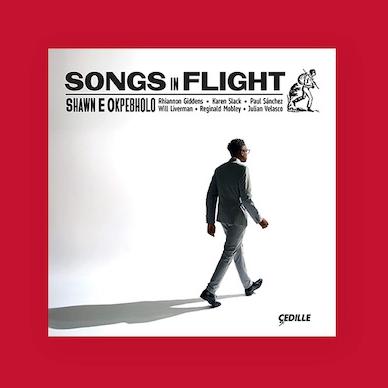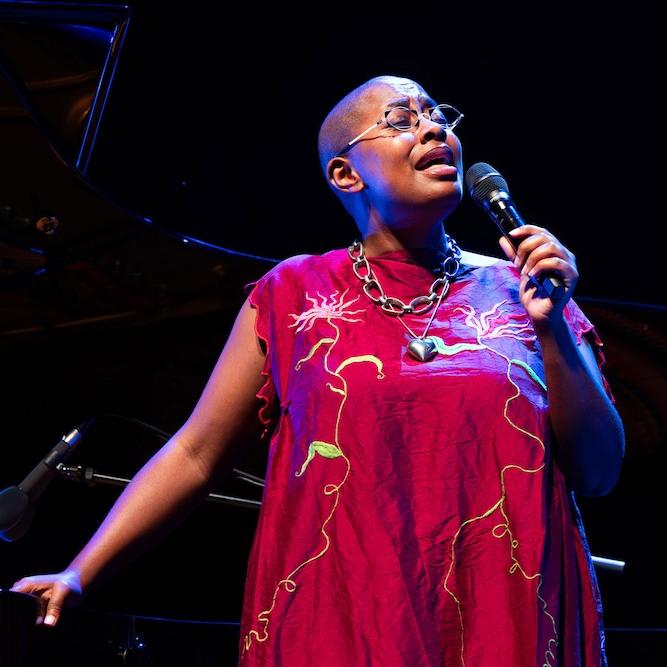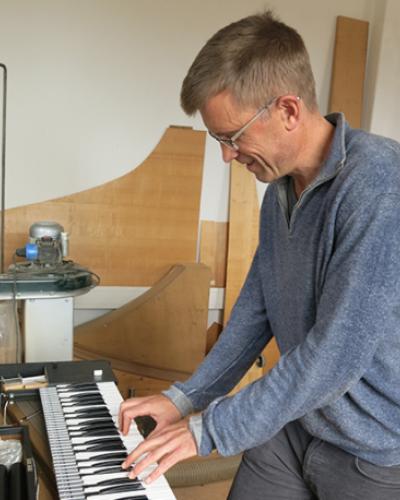David G. Yearsley, Music, first encountered the music of Johann Sebastian Bach as millions of people do—as a young piano student, learning from Bach’s Notebook for Anna Magdalena Bach. Yearsley progressed to more complex music in Bach’s keyboard repertoire, and as a teenager, he began playing the organ, discovering the composer’s large body of incredible organ music and a doorway into the past.
“If you become an organist, very quickly you are confronted with history,” Yearsley says. “Organs stick around for a long time. Learning how they were made, how they evolved over time, how music of a certain period would have sounded on older organs versus modern ones, once you get into that, you get into history.”
Bach, who lived from 1685 to 1750, is now the figure at the center of Yearsley’s research. As history’s most revered organist and composer, Bach’s life and work have been pored over by music historians. Many have documented his life in great detail.
Yearsley takes a step back—working to put Bach’s life and music more fully in the context of the times in which he and his family were living. The connections Yearsley has made have revised and complicated the master narrative of Bach as a magisterial genius and his second wife Anna Magdalena as a pious homemaker. Instead Yearsley finds in Bach “a collection of paradoxes and conflicts—like all of us are.”
Eighteenth Century Leipzig, Reflected in Bach’s Music
Leipzig, Germany—where Bach lived for the majority of his career—was both modern and backward-looking in the early eighteenth century. It had a democratic government: elections, and a town council and mayor. The city’s inhabitants enjoyed the fetishes of modern consumption: coffee houses, shops, and an obsession with clothes and leisure. It was also a deeply religious society, governed by theocratic law, with corporeal punishment and public executions.
“We tend to think of the eighteenth century, the age of enlightenment, as a time of progress. But as we know, the course of history is fitful, back and forth,” Yearsley says. “In Leipzig, you have many recognizable features of modern society, but you can also discern what we would call anti-modern aspects. These things co-exist in society and also in Bach’s music.”
Bach was a devout Lutheran, engaged with religious themes of death and dying, sin, fate, redemption, and grace. “He articulated these themes in really provocative ways that inspire us to want to understand why and how they influenced his music,” Yearsley says. “I suppose that I try to come to grips with how this music and its ideas were perceived during his time and how they are perceived in our modern world—particularly for me as a critic and historian but also for society. The music is fascinating stuff and just so rich, complicated, engaging, and current, even though—or maybe because—it does have these dark strains.”
Yearsley is also interested in this time period and place because it witnessed the rise of the musician-intellectual; it was a time when composers and musicians were creating a public discourse around music. “A huge number of books, treatises, magazines about music were published in the eighteenth century; and these allow us access to the ways people were thinking about things. These materials also provide some of the fascinating models for our own writing,” Yearsley says. “I think I see myself in the past, too. I make music and write about music.”
Re-characterizing Anna Magdalena Bach
In addition to being an accomplished keyboardist, Yearsley has published two books about Bach. These books discuss the counterpoint technique as well as the history and cultural significance of the organ. His next book—forthcoming from University of Chicago Press—is about Anna Magdalena Bach and the role of women in early eighteenth century German music and society.
It was a time of both progress and constraint, Yearsley says, where women were permitted to enter the public sphere but in limited ways. Anna Magdalena was a well-paid singer when she met Bach in a small court in central Germany. Six months later, they were married, and she went on to have 13 children, manage a household, and contribute to Bach’s musical career— often at the expense of her own music making.
The family’s move to Leipzig, possibly to enable the sons’ university education, was further constraining for Anna Magdalena. Although it was a city, there were fewer opportunities for women. Young boys, for example, still sang the soprano parts in Lutheran church services in Leipzig.
“Anna Magdalena was resurrected as a cultural figure at the end of the nineteenth century as a symbol of the German woman who supports the home,” Yearsley says. “I wanted to revise our sense of her, to dismantle the one-sided view of her as the doting mother who is just in the background.”
One clue Yearsley uses are Anna Magdalena’s musical notebooks—compilations of songs and keyboard pieces that are now the staple of early piano education. In her second notebook from 1725, Anna Magdalena inscribed a wedding poem at the end that is almost always omitted in reprintings. “Because it’s really off-color,” Yearsley says, “Ribald, coarse; it’s not what you would expect, given the image we have of her.”
To Yearsley, it reveals a very human side of this seemingly well-known but often misunderstood figure. “On the one hand, you have these pious Lutherans, very devout. On the other hand, there are all kinds of dirty jokes circulating in books and in the traditions of making music at weddings and family fests. So I was trying to see how that had informed the more polished court music. And I argue that as a court singer, she was also a sex object.”
Anna Magdalena lost seven of her children during her lifetime, and Yearsley posits that many of the songs in the notebook could have been played as a way to express her grief. “I’m trying to get a sense of the uses of music in the household, in the public sphere, and the range of musical activities and attitudes that informed her music making and that of other Lutheran women,” he says. “It’s a story about women and how this flourishing of female activity in the first part of the eighteenth century then gives way to a kind of containment of them. Progress and then backlash, which I think the Bach women of the next generation are then ensnared in.”
After Bach died in 1750, Anna Magdalena and her daughters were reduced to poverty. “They don’t have the opportunity to make a living through music as the sons were trained to do,” Yearsley says.
Bach’s Wit and Humor
With support from a 2018 Guggenheim Fellowship, Yearsley is taking a similar revisionist approach to what will become his next book—an examination of Bach as a humorist.
Yearsley explains that Bach’s early admirers praised his humor and wit, but that has generally been ignored by musicologists and historians who see Bach as exclusively a profound, deeply serious composer. “Which he of course was,” Yearsley says. “But arguably there’s a relationship between the comic impulse, which breaks through barriers and compares things that are otherwise not compared, that catches you off guard—that attitude, that way of thinking also can inform his genius in his serious music.”
As an example, Yearsley is looking closely at the Bach’s Brandenburg Concerto, which begins with sections of the orchestra playing in totally different meters. “It’s a complete cacophony,” Yearsley says. “You can imagine musicians performing it at the time and it being very odd. Because it’s so famous, we listen right past this attempt to be really, very funny in a wise, erudite way as opposed to a coarse, dirty joke way, which he also did.”
This book, like others, will provide a more complex view of who Bach was and all that his music contains—for listeners then and now. “You offer something up,” Yearsley says, “and hopefully it makes people appreciate or think of, even perform the music in a different way.”





